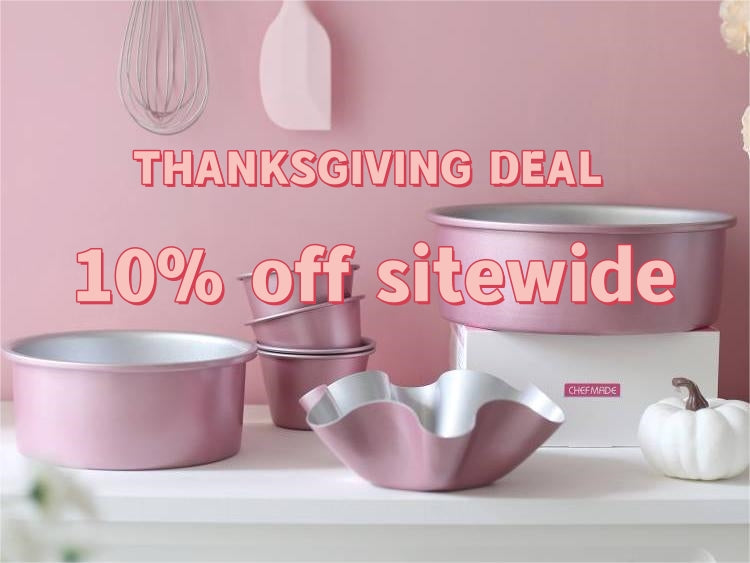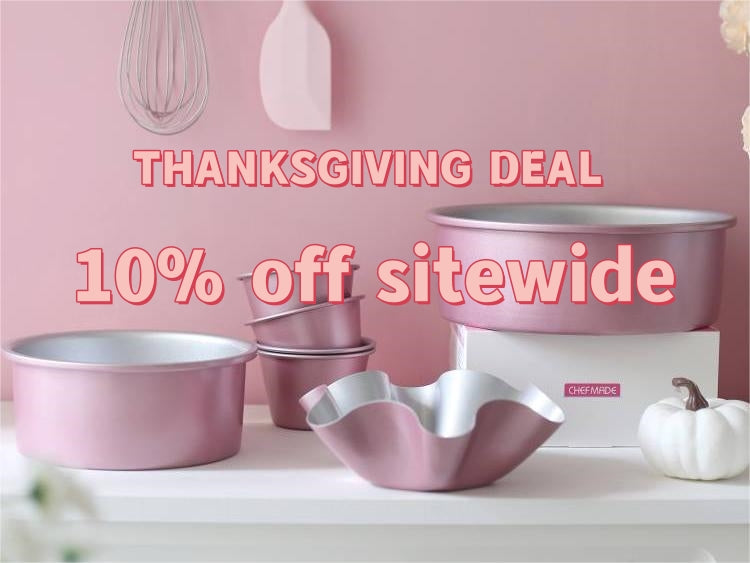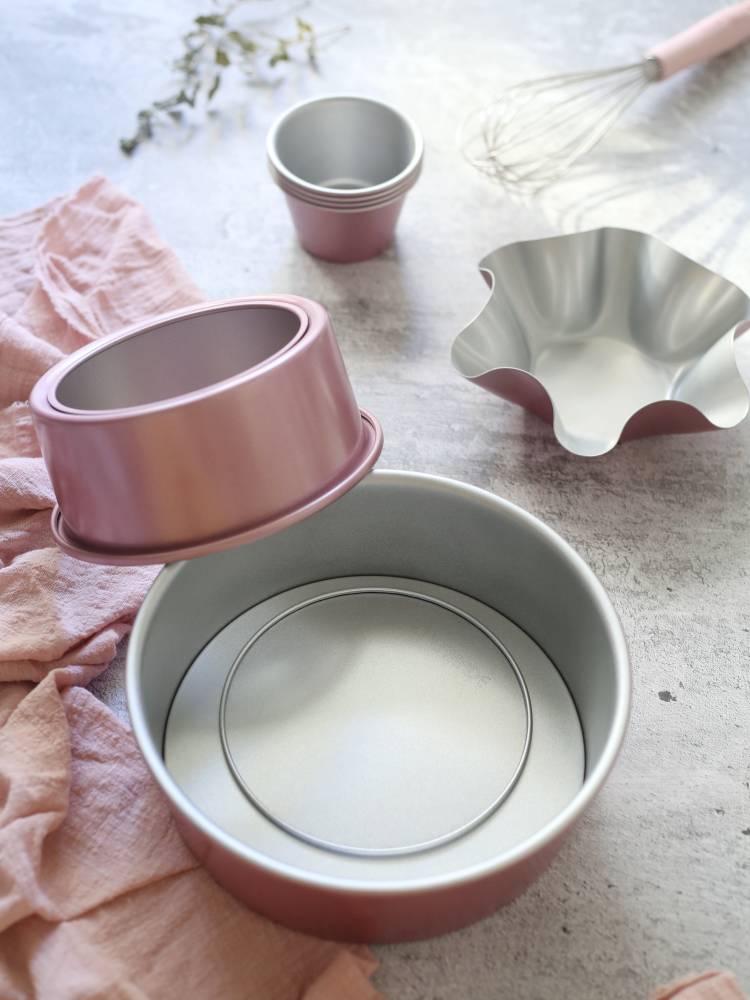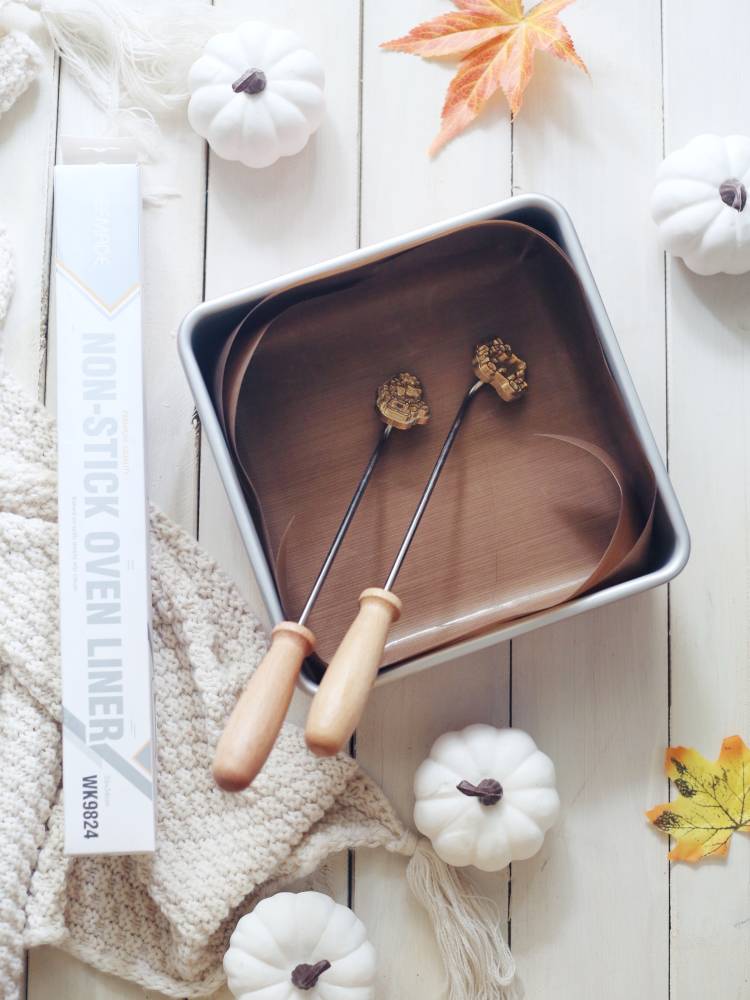
HOW TO CHOOSE BAKING PAN|THANKSGVING 2023
Share
SALE ALERT
Are you ready for Thanksgiving? Now is a great time to make a list. Do you have all the cookware you'll need for the big family feast? Let's get you prepared this holiday season at CHEFMADE!
10% off all products in CHEFMADE: https://chefmade.com/

Using good quality baking pans will go a long way in making your baked goods the best they can be! There are several things to consider to make the best choice for your baking needs.
BAKING PAN MATERIALS: METAL, SILICONE, AND MORE
How to choose baking pans? Generally speaking, the baking mold must be the first choice of carbon steel material, why say so?
Carbon steel baking pan is balanced in all aspects. Its temperature resistance and corrosion resistance are relatively good, and it is simple to clean. In addition, it will not precipitate harmful substances to the human body, so it will be safer and more assured than aluminum alloy baking pan.
Aluminum is durable and conducts heat well and evenly, but the protective layer is sticky, release difficult, cleaning difficult. In addition to this, it will easily generate alumina at high temperatures, which is harmful for us.
Silicone isn’t great at conducting heat. If you’ve ever baked cookies on a silicone mat, you’ll likely know that the bottoms of the cookies don’t brown as much as if they had been baked directly on the pan.
Of course, different types of materials are suitable for different foods. Home baking should pays more attention to safety and health. For beginner, carbon steel and non-stick coatings are more suitable for baking.

BAKING PAN THICKNESS: SINGLE AND MULTI-LAYER
Picking the right thickness of baking pan usually comes down to preference. Thin, single layer pans have the benefit of being quite inexpensive and light, but they aren’t very durable and don’t always conduct heat evenly.
Thicker, multi-layer pans are more expensive, but they are certainly more durable. Plus, you’ll get more consistent results from using them.
For products with different functions, we use 0.4, 0.5, 0.8mm carbon steel to achieve the purposes of protecting the products and making the best food. I believe that paying a little extra for a thicker, more solid pan is worth in the long run, because it won’t have to be replaced as quickly and it will give the best results.
BAKING PAN FINISHES: NON-STICK OR NOT
This is really all about preference. Non-stick pans help keep baked goods from sticking and also make cleanup easier, but there are definitely differences in how durable various finishes are.
Pans without a non-stick finish will require a bit more effort to help ensure that your baked goods don’t stick. If you use parchment paper to line your pans, then you don’t really need a non-stick finish.
You can find some of your favorite baking pans in CHEFMADE:

